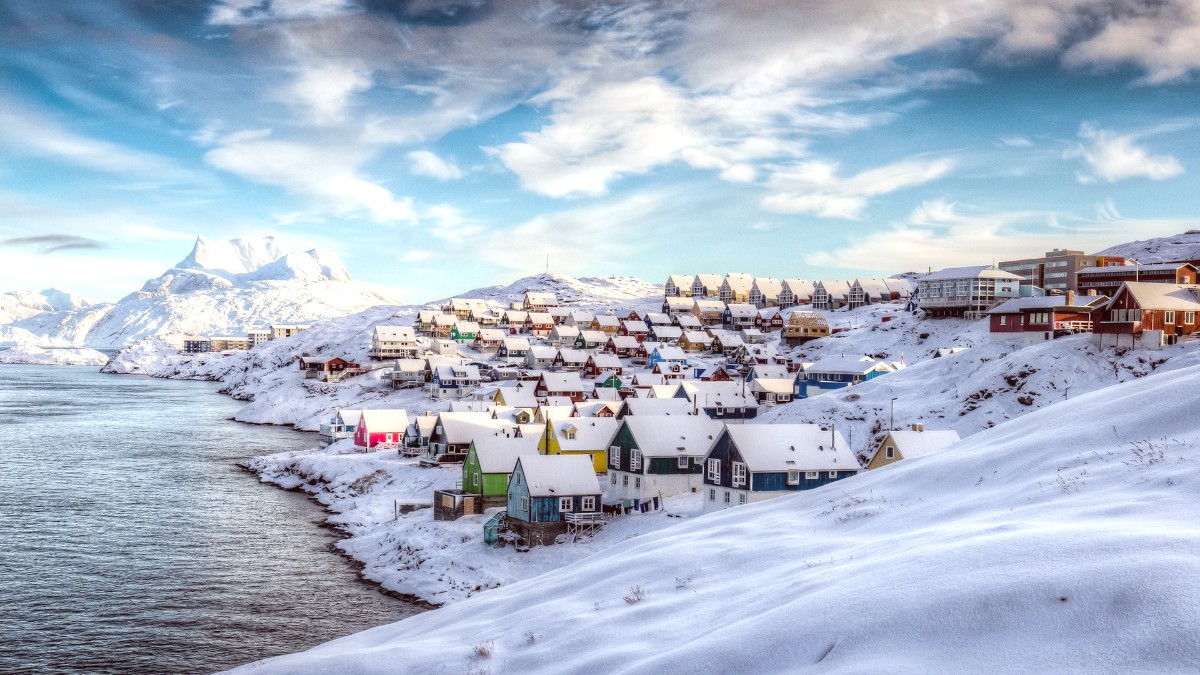
Greenland
Greenland's national carrier, Air Greenland, operates routes to Nuuk. These flights connect Nuuk with major international hubs, serving as the most common entry points for global travelers.
Icelandair provides direct flight options to Nuuk, often on a seasonal basis. This offers an alternative route for travelers, specifically those already in Iceland.
Prices generally remain high year-round due to the destination's remote nature. Booking well in advance is highly suggested.
In winter, flights may be less frequent and more susceptible to weather-related delays or cancellations. Always check status.
Nuuk Airport is relatively small, offering basic facilities like a duty-free shop and a cafe. Limited shopping/dining.
Greenland's geography means land transportation between settlements is not possible. There are no roads connecting Nuuk to other towns; all such movement requires air or sea travel.
No train services exist in Greenland. The terrain and sparse population render rail infrastructure impractical for the region.
No long-distance bus services link Nuuk to other towns or regions. Local buses, Nuup Bussii, operate only within Nuuk itself.
Car rental is possible in Nuuk for local use, but it is not practical for inter-settlement travel due to the limited road network outside the city. Your national driver's license is usually sufficient if it is in English.
Sea travel provides a different perspective on Greenland's vastness. Nuuk is a popular port of call for international cruise ships, especially during the summer months.
These options are generally not available or practical for tourists in Nuuk. The weather conditions, especially outside of peak summer, and the hilly terrain do not favor such transportation methods.
Nuuk does not have cable cars, funiculars, or other unique local transport systems common in some other regions. While Nuuk is modern, its hilly terrain and older buildings can present accessibility challenges.
Nuuk's public transportation is managed by Nuup Bussii, consisting solely of a bus network. This system aids efficient movement within the city and its immediate suburbs. Buses are modern and reliable, providing a cost-effective way to get around.
Buses generally run from early morning until late evening on weekdays. Service typically sees reduction on weekends and public holidays. During peak hours, buses may run every 20-30 minutes; off-peak periods may experience less frequent service.
Use a local bus app or Google Maps for real-time tracking. Have exact change ready. Be aware of last bus times.
Taxis offer a convenient alternative, especially for short trips or with luggage. Ride-sharing services like Uber are not available.
Nuuk's city center and Colonial Harbour are very pedestrian-friendly. Bicycle rentals are available during warmer months.
Taxis in Nuuk are licensed and usually white or yellow. You can hail them on the street in central areas, find them at designated taxi stands, or call a taxi company for pick-up.
Taxis in Nuuk are safe and reliable, with professional drivers and well-maintained vehicles. The city center, Colonial Harbour, and museum areas are very pedestrian-friendly, ideal for exploring on foot.
Drive on the right side of the road. Speed limits are typically 50 km/h in urban areas and 80 km/h outside. Roads within Nuuk are generally well-maintained, but winter conditions can present challenges.
Parking is available throughout Nuuk, often free of charge, though it can be limited in central areas. Watch for potential wildlife, like reindeer, on roads outside the town limits.
Nuuk contains some dedicated cycling paths, though they do not span the entire city. Cyclists share roads with cars. Safety generally is good due to low traffic volume.
For detailed route planning and real-time bus tracking, downloading a local bus app or using Google Maps is a good idea. This helps avoid long waits at bus stops and ensures efficient travel within the city. Always confirm bus schedules for weekends and evenings, as service frequency can change.